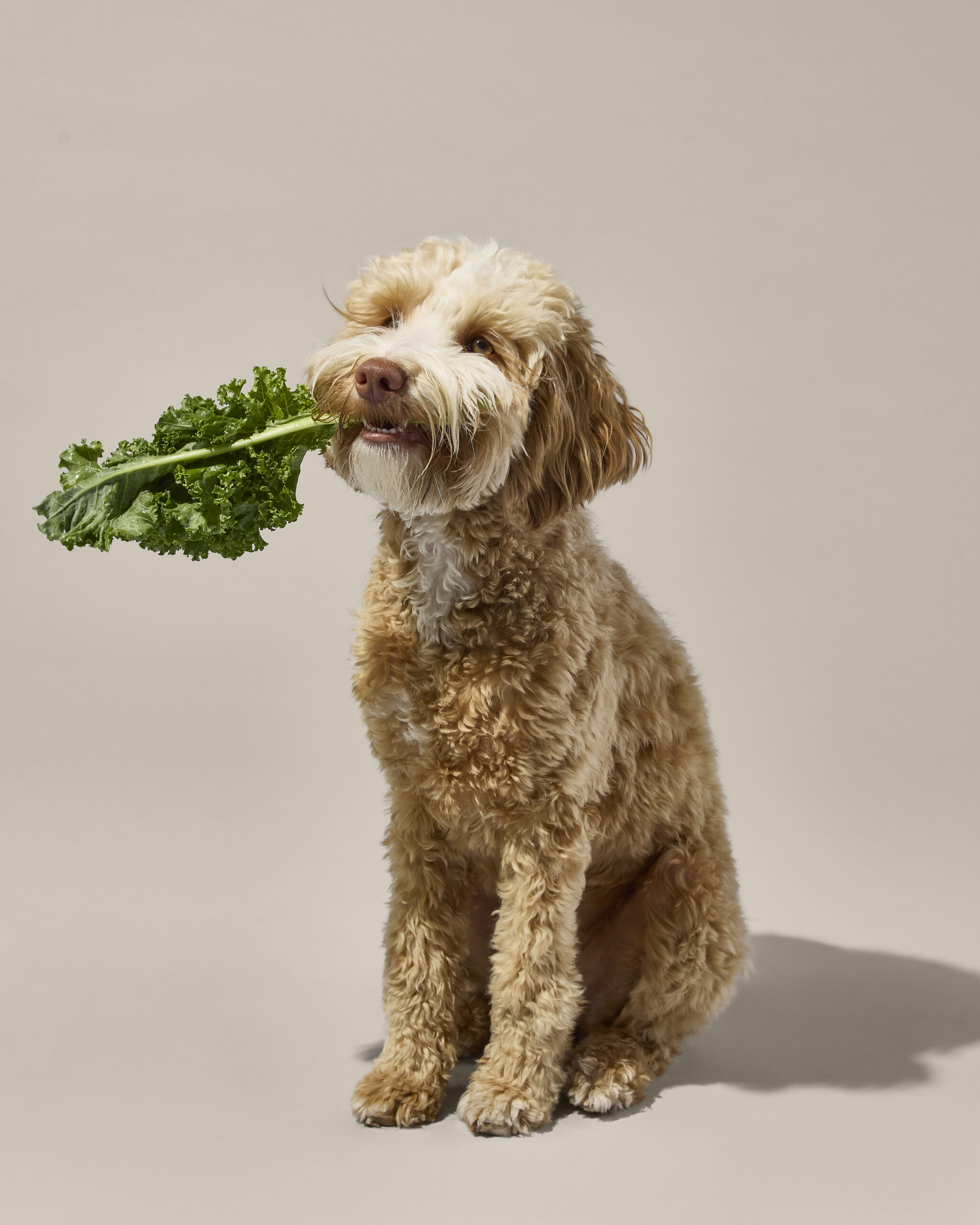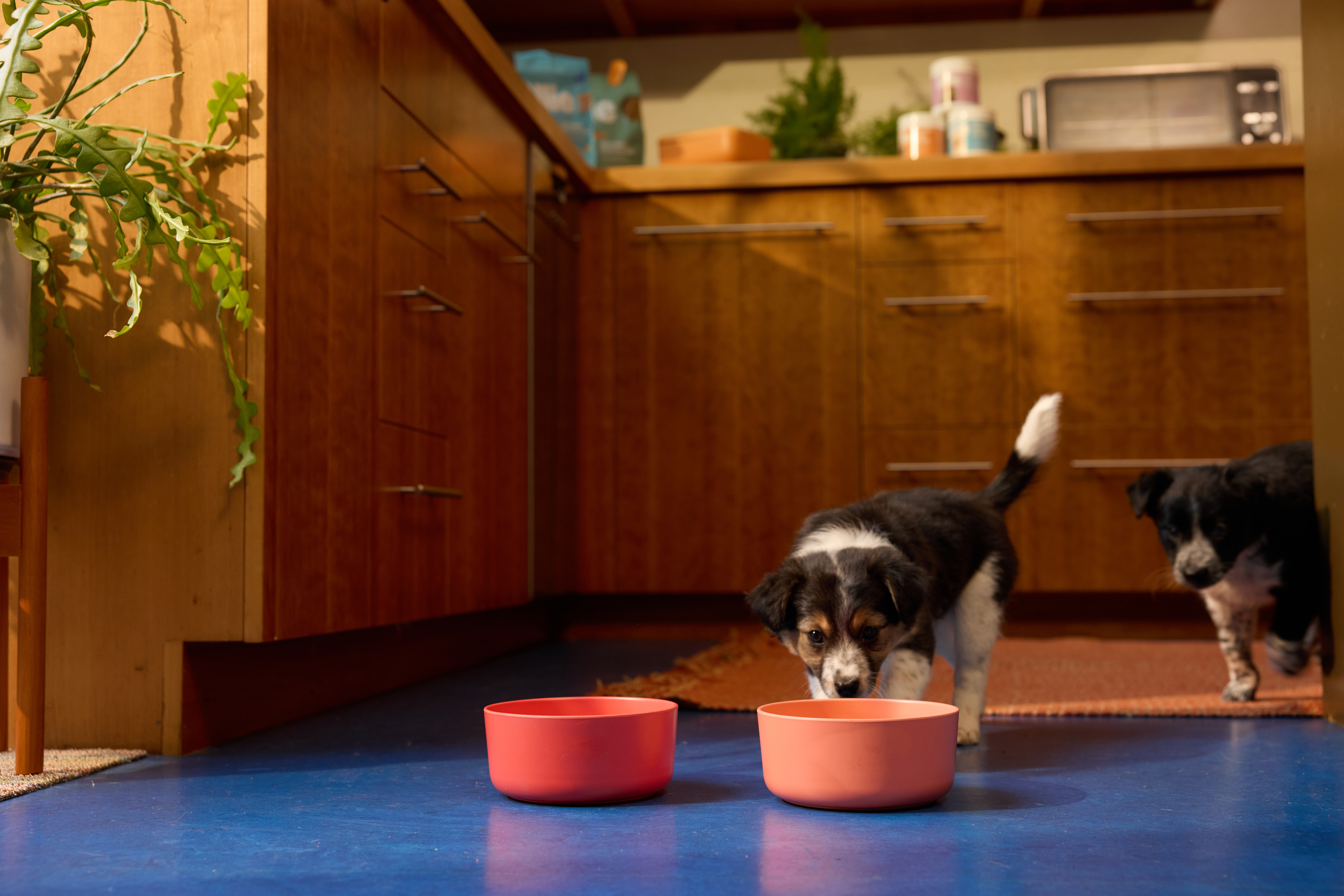Hey Ollie blog readers! We’re offering you an exclusive 60% OFF your starter box! Try now!
The food in your dog’s bowl is more than something to satisfy their appetite and get them to stop begging at the table. Your dog’s nutrition provides them with energy, sustenance, and fuel for every internal process—from the visible (e.g., jumping on the couch) to the microscopic (e.g., cellular functions in tissues and organs).
With such an important role and so many options—different brands, flavors, and formulas—many dog owners question the best way to feed their four-legged friend. Is combination feeding the right strategy? We explain the precautions and advantages of mixing dog foods with different textures and moisture levels.
Benefits of Combining Dog Food Textures
In some circumstances, and with veterinary guidance, mixing foods can benefit your dog. Here are six specific advantages to combining wet (i.e., canned), dry, baked, semi-moist, or fresh dog food.
- New foods can stimulate your dog’s appetite.
New foods can stimulate reluctant eaters’ senses with novel flavors, textures, and aromas. If your dog traditionally eats dry food, try mixing the kibble with wet food and vice versa. Fresh dog food formulas, which often contain vegetables and grains, and freeze-dried or dehydrated toppers can also provide novel textures and flavors that will spark your pet’s appetite.
If your dog is currently eating a veterinary therapeutic (i.e., prescription) diet, ask your veterinarian if the food is available in a different formula or a comparable brand. This can increase your dog’s interest without changing their therapeutic diet’s nutritional benefits.
- Mixing foods can be cost-effective.
Wet, semi-moist, and dehydrated foods are generally more expensive per ounce than dry dog food, but dry food supplements can make your dog’s diet more cost-effective without sacrificing high-quality nutrition and palatability. Dry food can also add texture and crunch, and make meal time more interesting for your pet.
- Formula variations provide enrichment opportunities.
Enrichment feeding, which can involve wet and dry food, extends and enhances your dog’s meal experience by encouraging mental and physical engagement. Exploring alternative food formulas can create new enrichment opportunities, including:
- Snuffle mats — Dry, non-crumbling foods can be scattered through these fabric activity mats to encourage sniffing and foraging.
- Puzzle toys — Interactive puzzles challenge your dog to use their nose and paws to manipulate moving pieces, drawers, and pulleys to access hidden food.
- Lickable mats — Wet and fresh recipes can be spread on these textured silicone mats for a unique sensory experience. Licking is naturally soothing and can ease stress and anxiety, and promote slow eating.
- Hollow toys — Flexible hollow toys (e.g., Kongs) can be filled with wet, fresh, and dry food combinations for increased variety, interest, and challenge.
- Soft foods can encourage slower consumption.
If your dog tends to “wolf down” their food and treat every meal like a speed-eating contest, adding warm water, wet, or fresh food is a simple way to promote slower eating. Increased hydration and more methodical eating may also improve digestion and potentially lower your dog’s risk for choking, nausea, vomiting, and serious conditions such as bloat (i.e., gastric dilation volvulus [GDV]). For additional benefit, put moistened dry food in a slow feeder bowl with grooves and ridges to encourage slower eating.
- Blended formulas can assist with weight management.
Whether your pet needs to lose or gain weight, food combinations can provide the perfect proportion of calories and nutrients without sacrificing your dog’s comfort. Balancing calorically dense food with more moderate diets can help underweight dogs1 gain weight without eating large quantities or experiencing gastrointestinal distress. Overweight pets can lose weight without feeling hungry by pairing a nutritionally complete weight-loss food with healthy, low-calorie ingredients, such as green beans or other pet-safe low-glycemic vegetables.
- Supplemental moisture can improve your dog’s hydration.
Increased hydration may benefit pets with kidney disease2, urinary problems3, and seniors with cognitive dysfunction syndrome4 (i.e., dementia) who may forget where their water bowl is located. Adding fresh food, wet food, or warm water to your dog’s current dry diet will enhance their daily water intake and may ease the workload on their kidneys and digestive tract. Older dogs can more easily eat softened kibble, which smells more appetizing and can encourage reluctant seniors and those with sensory loss.
Ollie now offers a mixed bowl meal plan, which includes a 50-50 mix of fresh and baked dog food, allowing your dog to enjoy the best of both worlds at every meal. This carefully crafted mixture may help re-energize your dog’s waning appetite and make mealtime more exciting.
Reminders and Tips for Mixing Dog Foods
Although mixing dog foods seems to offer limitless benefits and options, you must keep several important guidelines in mind before you introduce new culinary combinations to your canine.
- Don’t mix new foods with veterinary diets — Therapeutic diets are designed to suit your pet’s specific needs. Supplementary foods can disrupt this nutritional profile and negatively affect your dog’s health.
- Talk to your veterinarian to determine the correct ratio — Dog foods have vastly different nutritional profiles—including those of the same formula or brand. Your veterinarian can tell you how much you should feed your dog per meal to prevent over- or under-feeding.
- Introduce new formulas gradually — Each new food should be introduced slowly, over at least seven days, to prevent gastrointestinal upset.
- Remove uneaten food — Remove leftover moistened or wet food after 30 minutes to prevent spoiling, which can make your dog sick or affect their future interest.
- Monitor your pet’s weight and body condition — Periodically weigh your pet or assess their body condition5 to ensure they respond appropriately to the diet modification (i.e., gaining, losing, or maintaining weight).
Hungry for Change? Talk to Your Vet
Always consult your veterinarian about changes in your dog’s appetite, and before adding or removing anything from their current diet, including food toppers or enhancers. This is especially true for pets with pre-existing conditions, such as food allergies, sensitivities, digestive conditions, and those currently on a therapeutic diet. Your dog’s daily nutrition is critical to their overall health, and changes not run by your vet can result in an unbalanced diet that negatively affects their health.
Although some dogs are habitually picky eaters, appetite change or loss often indicates a serious underlying health issue, so if your pet is suddenly disinterested in their food, schedule an appointment with your dog’s veterinarian for a full examination and diagnostic testing.
Mixing dog foods can enhance your dog’s health, stimulate their appetite, and provide fun enrichment. With careful consideration and veterinary guidance, you can expand your dog’s palate and witness bowl-licking benefits that satisfy both ends of the leash.
Sources:
Tagged As:

The nutrition your dog needs,
the food they want.

Enjoying our articles? Subscribe our Newsletters and get new articles directly to your inbox
You might also like
4 August 2025
5 MINS READ
Key Ingredients in Fresh Dog Food Explained
The right food starts with the right ingredients. Unlike highly processed kibble, which can contain fillers and low-quality by-products, fresh food focuses on transparency and quality. At Ollie, w…
by Ollie Pets
4 August 2025
6 MINS READ
Fresh Dog Food Benefits for Growing Puppies
Proper nutrition as a puppy is the foundation for a long, healthy, and happy life. Fresh, human-grade meals can support your puppy’s rapid growth, brain development, and long-term health in ways…
by Ollie Pets
4 August 2025
6 MINS READ
Choosing Specialized Dog Food: Solutions for Allergies and Sensitivities
There’s nothing more difficult than seeing your dog uncomfortable. Constant scratching, upset stomachs, or chronic ear infections can be signs that something in their diet isn’t agreeing with …
by Ollie Pets







